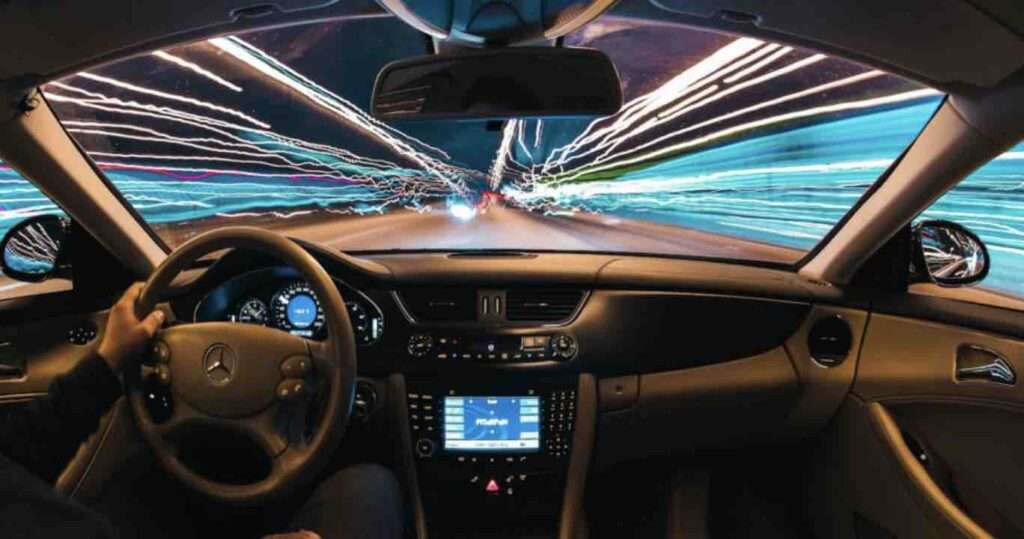Last updated on July 16th, 2023 at 03:22 pm
Electric vehicles (EVs) have gained popularity in recent years as people become more conscious of the benefits of lowering their carbon impact. However, locating dependable and convenient charging stations is one of the most difficult challenges for EV owners.
In response, New York City made a significant move forward by introducing solar-powered charging stations for electric vehicles. These charging stations are carefully placed in high-traffic areas, allowing EV owners to more easily access renewable energy and reduce energy costs
In this article, you will discover the solar-powered charging stations for electric vehicles in New York City, the types and costs of solar charging stations.
What is a solar-powered charging station?
A solar-powered charging station is an infrastructure constructed for electric vehicle owners to charge their vehicles with solar energy. The photovoltaic (PV) panels at the charging stations convert the sun’s rays to energy and store them in batteries for use when the sun is not out. The energy is then sent through a charging port to the battery of an Electric Vehicle serving as a source of power for transportation
Types of Solar charging stations
The different types of solar charging stations built for electric vehicles can be classified into:
AC Level 1 Charging Stations
Level 1 charging stations are the most basic electric vehicle charging stations (EVs). They charge an EV’s battery using a conventional 120-volt outlet. They are slow, and it can take up to 40-50 hours to fully charge a battery electric vehicle from empty, whereas a plug-in hybrid EV takes 5 – 6 hours.
Level 1 charging stations are typically located in residential locations where EVs are parked for extended periods, such as overnight. They are inexpensive and simple to install, but they are too slow to be utilized for public charging.
AC Level 2 Charging Stations
Level 2 charging stations charge the battery of an EV faster than Level 1 stations and use 240-volt power to do so. They can fully charge a typical EV battery in 4 to 10 hours, and a plug-in hybrid EV(PHEV) for 1-2 hours from empty — which makes them perfect for public charging in places where people tend to park for a few hours, like shopping malls, offices, and public parking lots.
Level 2 stations need to be set up by a professional, and the cost depends on where they are and how the electricity is set up.
Direct Current Fast Charging Stations
Also called Level 3 charging stations, DC Fast Charging Stations are the fastest charging stations for electric vehicles. They use a high-voltage DC power source to charge the EV’s battery, which usually takes about 20 minutes – 1 hour to charge up to 80%.
DC Fast Charging Stations are frequently found along highways, at rest areas, and in other locations where EVs may require rapid charging. They are more expensive to install than Level 2 stations and necessitate extensive electrical infrastructure.
Solar-powered charging stations for EVs in NYC
Solar-powered charging stations for EVs are located in different places in NYC.
Some of the best places with solar-powered charging stations for EVs in NYC are New York-Newark-Jersey City, Albany-Schenectady-Troy, Rochester, and Buffalo-Cheektowaga-Niagara Falls.
Here is a table containing each location
| New York-Newark-Jersey City | Albany-Schenectady-Troy | Rochester | Buffalo-Cheektowaga-Niagara Falls |
| 7-Eleven (765 check-ins)58-20 Francis Lewis Blvd, Flushing, NY 11364, USA | Walmart Supercenter Albany (755 check-ins)141 Washington Ave Ext, Albany, NY 12205, USA | Victor Supercharger (196 check-ins)7979 Pittsford Victor Rd, Victor, NY 14564 | Western NY Welcome Center (Grand Island Travel Plaza) (560 check-ins)2182 Alvin Rd, Grand Island, NY 14072, USA |
| Walmart Supercenter Newburgh (609 check-ins)1201 Route 300, Newburgh, New York, 12550, US | Albany Supercharger (340 check-ins)131 Colonie Center Albany, NY 12205, USA | Victor Crossing (282 check-ins)441 Commerce Dr, Victor, NY 14564, USA | Walmart Supercenter Cheektowaga (444 check-ins)2500 Walden Ave, Cheektowaga, New York, 14225, US |
| Walmart Supercenter (556 check-ins)290 NJ-18, East Brunswick, New Jersey, 08816, US | Hannaford Supermarket (285 check-ins)900 Central Ave, Albany 12206 | Fairport: Village Landing (173 check-ins)50 S Main St, Fairport, NY 14450, USA | Buffalo Supercharger (316 check-ins)4455 Transit Road, Buffalo, NY 14221 |
| Tazza Cafe (500 check-ins)197 Katonah Ave, Katonah, NY 10536, USA | Schodack Stewart’s Shops (252 check-ins)1811 Columbia Turnpike, Castleton-On-Hudson, NY 12033, USA | Fairport Village Landing – Dollar Tree (167 check-ins)255 Fairport Village Landing, Fairport, NY 14450, USA | Bellreng Automotive and Towing (193 check-ins)2131 Eggert Rd, Amherst, NY 14226, USA |
| Nissan City of Red Bank (493 check-ins)120 Newman Springs Rd, Red Bank, NJ 07701 | Westmere Supercharger (229 check-ins)330-1 Crossgates Mall Rd, Albany, NY 12203, USA | The North Face Rochester (151 check-ins)234 High St, Victor, NY 14564, USA | Chili’s Amherst (154 check-ins)1145 Niagara Falls Blvd, Amherst 14226 |
| Woodbury Common Premium Outlets (1) (489 check-ins) 498 Red Apple Ct, Central Valley, NY 10917, USA | Latham Stewart’s Shops (191 check-ins)204 Wade Rd Extension, Latham, NY 12110, USA | Brighton Public Library (120 check-ins)2300 Elmwood Ave, Rochester, NY 14618, USA | Cheektowaga Supercharger (147 check-ins)2013 Walden Ave, Cheektowaga, NY 14225, USA |
Is there a solar charger for electric cars?
Yes, there are solar chargers for electric cars: stationary and portable chargers. They come in different shapes and serve different purposes.
Stationary solar chargers can be put up at home or in a business so that electric car drivers can charge their cars while they are parked.
Portable solar chargers are great for those who love to travel. They are light and easy to carry and can be set up in outdoor areas.
How much does a solar power charging station cost?
The cost of a solar power charging station that can charge small devices like phones and laptops ranges between $500 and $1000.
While the cost of larger solar power charging stations capable of charging electric vehicles can range from $5,000 to $20,000 or more. Larger solar panels, high-capacity batteries, and advanced charging controllers are required for these systems.
Can you Charge an EV with Portable Solar?
It is not possible to charge an EV with portable solar panels— directly. There is no easy way to get the DC made by the solar panels into the EV’s battery system.
But you might be able to charge your EV if you used a solar generator as a bridge. Although, charging an electric car with a solar generator and portable PV panels is not an efficient way to do it, and I wouldn’t recommend that anyone buy portable solar panels just for this purpose.
Are There Government Owned Solar Charging Stations?
Yes, there are government-owned solar charging stations around the world. Though, more companies in the United States offer solar charging stations for electric vehicles (EVs) than government-owned ones. But the number of people on the list who have a large network is much smaller. In addition, only a few offer DC fast-charging stations, which are the only practical electric vehicle charging stations for road travel.
How to access the time taken by the solar charging infrastructure?
Accessing the time taken by solar charging infrastructure depends on the particular infrastructure you are using. Here are a few ways to access the time taken to charge EVs:
1. Check the charging station’s display.
A great number of charging stations are equipped with displays that show how quickly the charge is being completed and how much time is still available. By looking at this, you will be able to get an idea of how much time is spent on the charging process.
2. Examine the app for charging
Some charging stations require you to utilize an app on your smartphone to begin the charging process and monitor its progress. The app will give you an estimate of how long the charging procedure will take.
3. Check the interior of the car
Some electric cars have a screen on the dashboard that shows the charging state and how much time is left to charge. This can help you keep track of how far along the charging process is.
4. Contact the owner of the charging station
Some electric vehicles have a screen on the dashboard that displays the current charging state and the remaining amount of time until the battery is fully charged. This might assist you in keeping track of how far along the charging process is now at any given time.
Overall, the way to find out how long the solar charging infrastructure takes will depend on the infrastructure you are using and the information you have at your disposal.
Conclusion
Installing solar-powered charging stations for electric vehicles in New York City is a big step toward making transportation less harmful to the environment. With the growing popularity of electric vehicles, the installation of solar-powered charging infrastructure will be crucial to meeting the city’s clean energy goals.
FAQs
Are solar-powered battery banks worth it?
Solar-powered battery banks are worthwhile. They are helpful if you live in the countryside and aren’t close to a regular power outlet. They are also great for those who love camping. Solar-powered battery banks help you save costs.
Do solar-powered chargers work?
Solar-powered chargers function just as well, if not better, than normal trickle chargers.
When solar chargers are under direct sunlight, electricity flows through them. But, this does not imply that you will not have electricity when it is foggy; you will; your charger will only work less effectively. Even standard chargers will not operate when there is no power source.
How long do solar chargers last?
Solar chargers typically last between 3 and 25 years. This depends on how good the solar cells are. High-quality cells last at least 25 years, but lower-quality cells may not last as long.
Does solar charging damage the battery?
Solar charging damages batteries only If you don’t connect a solar charge regulator to your solar panel; it sends too much voltage from the sun, damaging your battery. The only exception is if the panel is so small that it can only provide drip current and keep a float charge.
Where does solar go when batteries are full
When a solar battery is fully charged, the inverter and charge controller takes over to handle the excess power and reduce the risk of damage. They do this by pushing the excess power into the panels, back into the grid, or causing a dump load.
How long can a 100Ah battery run a TV?
How long a 100Ah battery will run a TV relies on how much power the TV needs, how well the inverter works to turn DC battery power into AC power for the TV, and how full the battery is.
For instance, A 100Ah battery can run a 10W appliance for about 120 hours and a 2,000W device for about 36 minutes.
Assuming a normal LED TV uses 100 watts of power and a fairly efficient inverter with a 90% conversion efficiency, a 100Ah battery will power a TV for about 8 to 10 hours.
What are the 3 drawbacks to storing solar energy in batteries?
The three drawbacks to storing solar energy in batteries are: High costs for energy storage, Increase in Complexity and High cost of Maintenance




